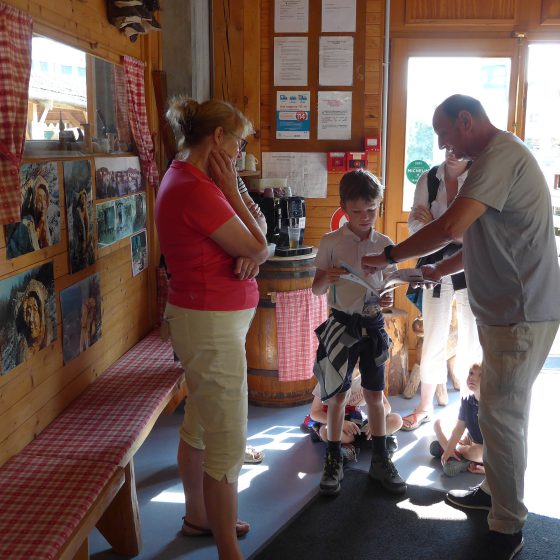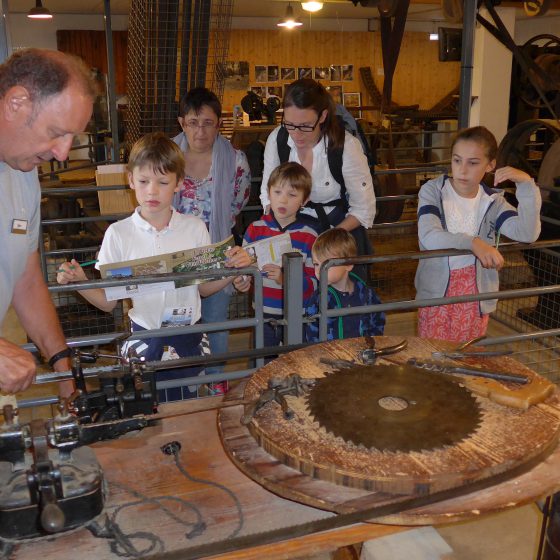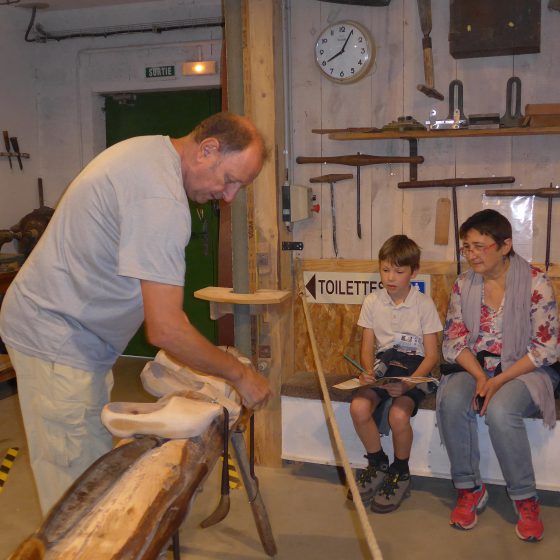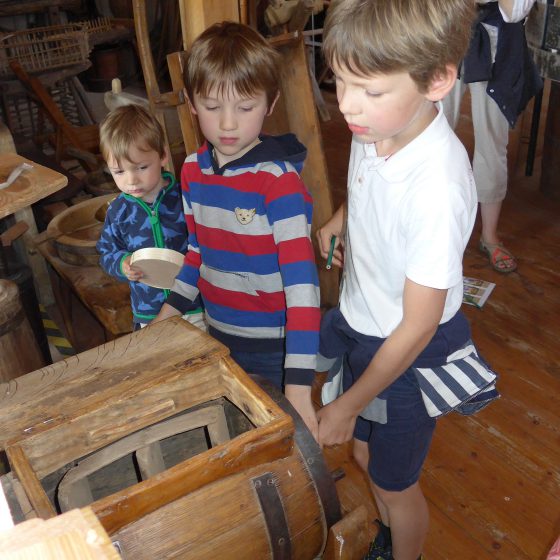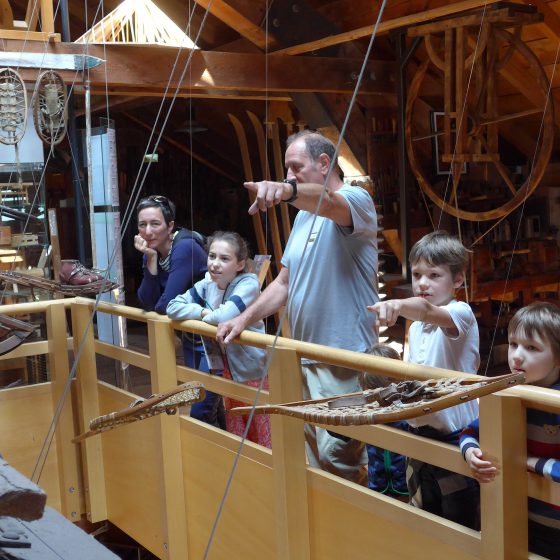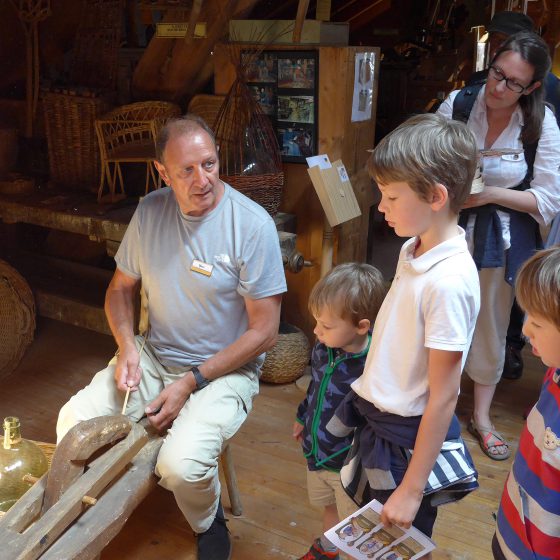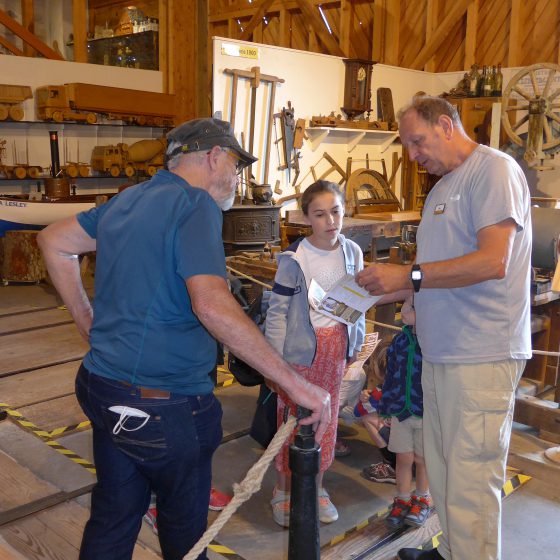THE FOREST AND WOOD
a vital resource
The museum of woodcrafts > The forest and wood
The forest seems unchanging, untouched, a living fossil from the first ages of Creation. However, the totality of European forests has been profoundly shaped by Man throughout history. Sacred woods, setting of legends, theme of romantic engravings, the forest strongly impregnates the Western mentality. Element of the familiar landscape, it played for centuries, a vital role for the whole society.
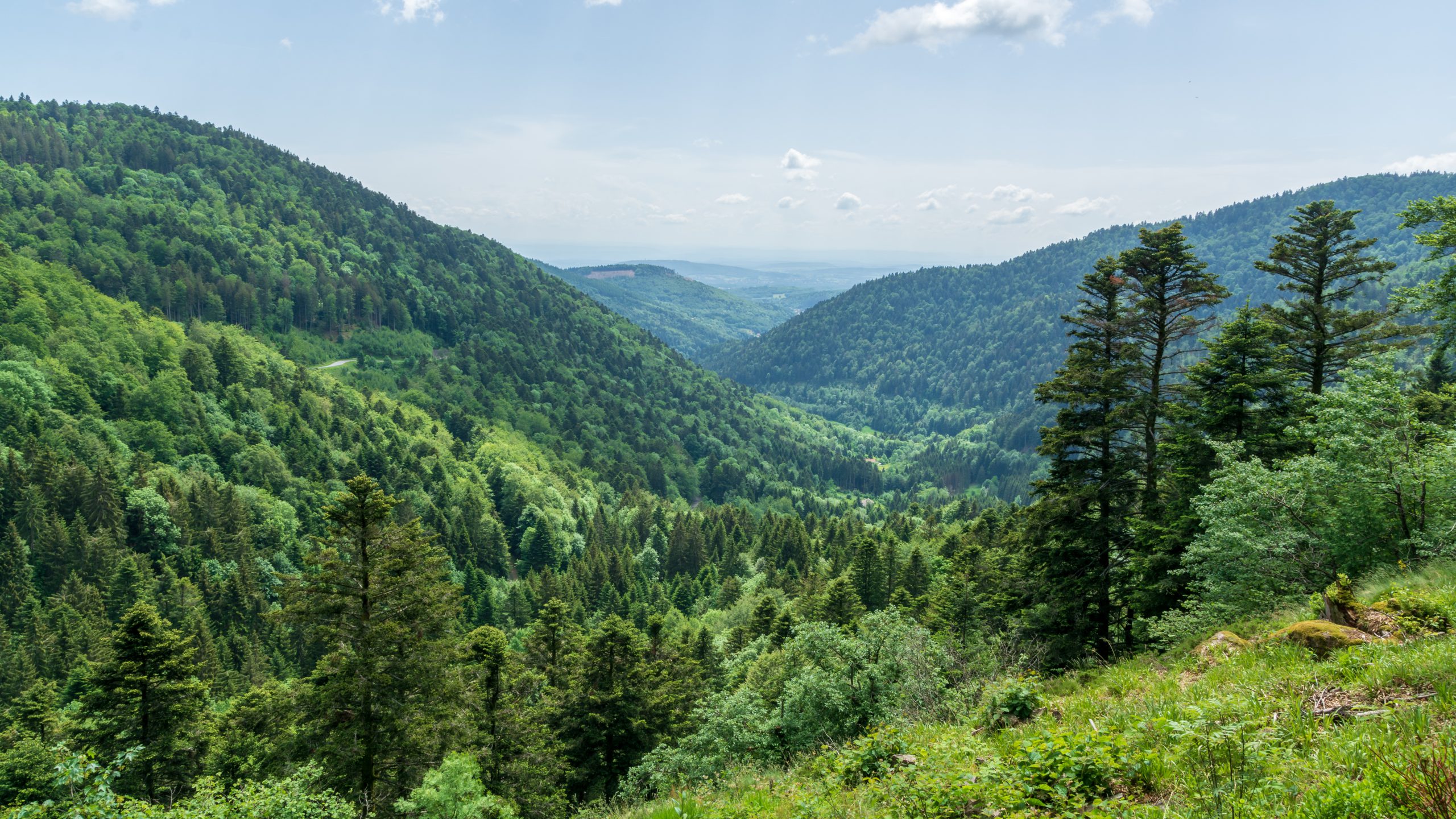
Wood, an indispensable resource
« Make an arrow out of any wood » (meaning use all available ressources to achieve your goal), this expression illustrates the essential place that this material once held in everyday life. Indeed, wood was, for centuries, essential for heating, sheltering and feeding.
Since the dawn of time, the forest has provided the essential fuel for cooking and heating, before the use of other energies. Until the end of the 19th century, wood was also used as fuel by industries. Workshops and factories consumed large quantities of charcoal. From the cradle to the coffin, people have always lived surrounded by wood. A traditional Alsatian house requires an average of eighty fir trunks for the halftimbering and the framework.
The forest also produces timber for a host of craft and agricultural activities. Oaks, beech and fruit trees are used for furniture. At the edge of the forests, clog makers are busy and woodworkers make kitchen utensils and tools. Winegrowers use large quantities of young oak trees as stakes for their vineyards, while coopers make barrel staves. From the fisherman’s boat to the cart or the schlitte, wood is also used as a material for various means of transportation.
Do the weekend mushroom pickers remember that they are carrying on a thousand-year-old picking activity ? If nowadays, gathering in the forest is more of an outdoor leisure activity, it used to provide an appreciable food supplement of wild fruits: apples, cherries, nuts, hazelnuts or chestnuts. The undergrowth provides mushrooms and wild berries (raspberries, strawberries, blueberries). What would regional gastronomy be without blueberry pie, brandies or cranberries? The forest is also the usual setting for hunters and poachers! The forest also welcomed the herds in search of fodder. For lack of sufficient meadows, the farmers sent their herds there, including pigs in autumn for the montanera period (when ripen acorns fall from the trees).
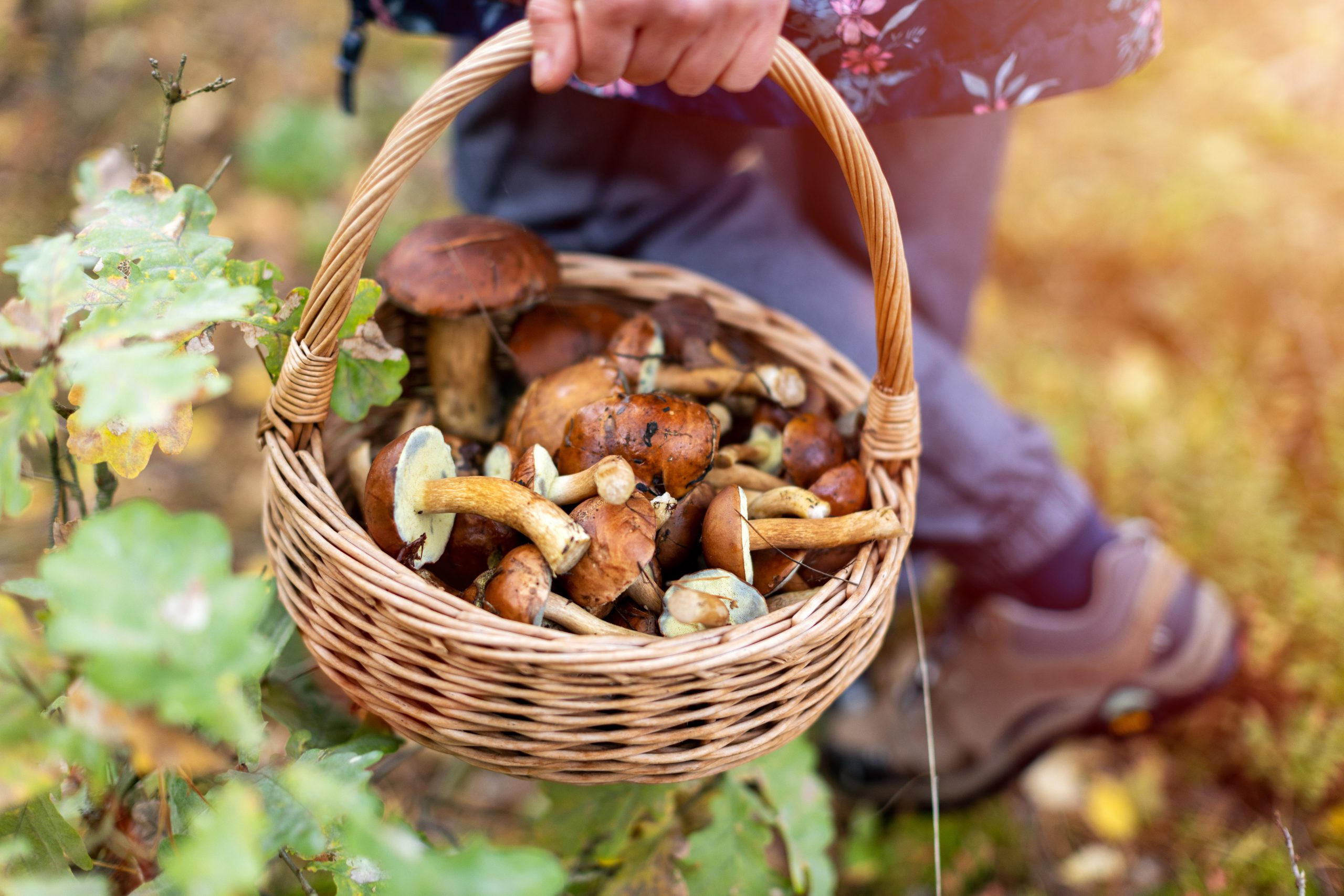
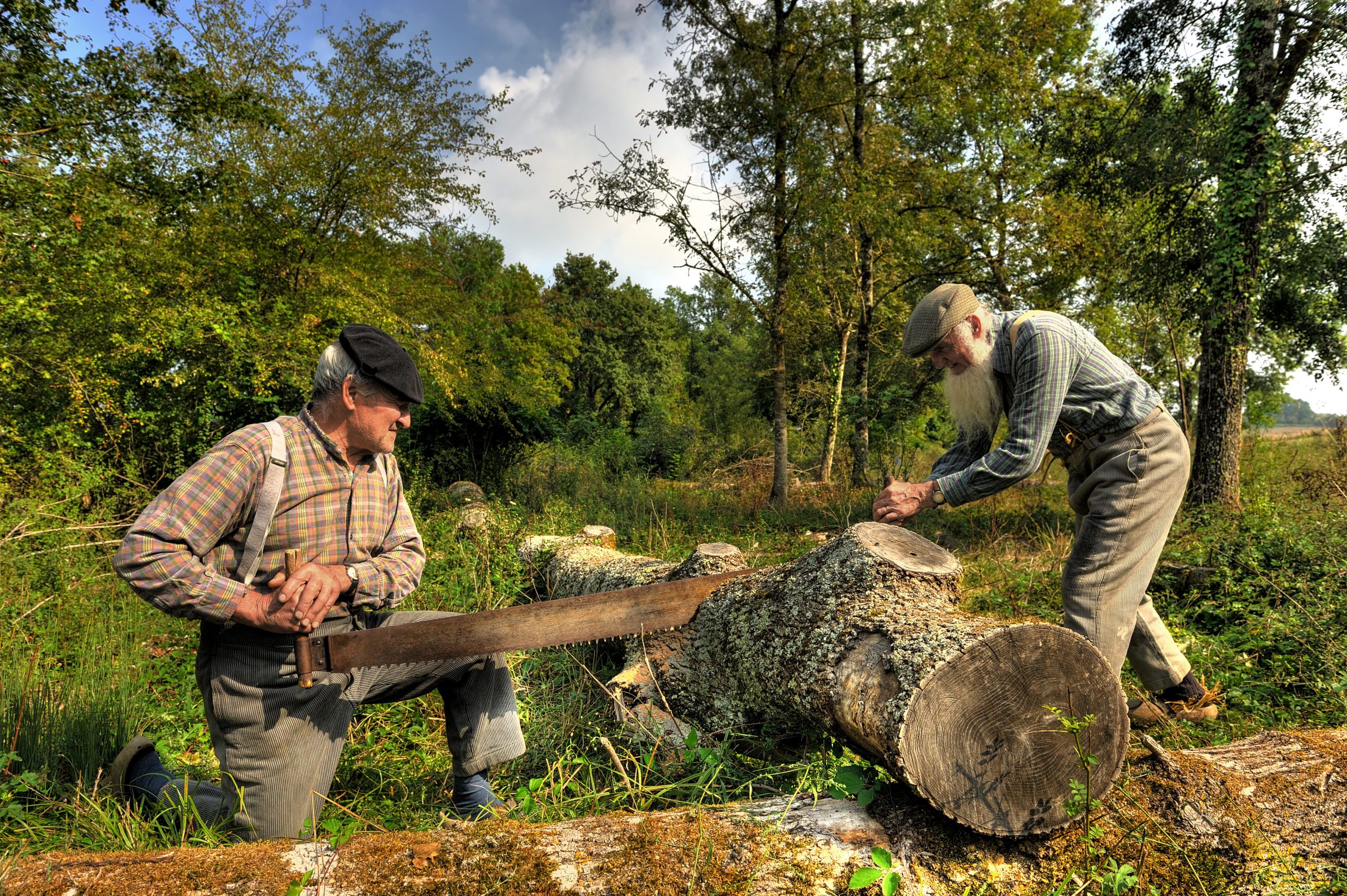
The forest at risk, a threatened space
During periods of demographic and economic growth, the forest inexorably retreats, becoming a threatened area. From the year 1000, Western Europe experienced a tremendous demographic boom. How to feed these new mouths? By conquering new lands on the forests. Between 1050 and 1250, Western Europe accomplished an immense deforestation effort, it was the time of the great clearings. In order to attract and fix inhabitants on their territories, the lords granted forestry advantages or rights of use such as estovers rignts, the delivery of firewood, and marooning wood, the wood for construction.
From the Renaissance onwards, an important industrial development took place in Alsace, based on the use of wood as fuel. The first industrial sites such as glassworks and forges were established in the heart of the forests. The mining activity in the valley of Sainte-Marie-aux-Mines consumed prodigious quantities of wood and was forced to overflow into the neighboring valley, in Fréland and in Le Bonhomme.
Centuries of deforestation followed one another, interspersed with downturns characterized by abandonment due to political unrest. The wars of the 17th century, on the contrary, were a real respite for the forest cover which regained part of the land that had been abandoned during the previous centuries. At the end of the 17th century, in order to repopulate the region devastated by the wars, Louis XIV granted the inhabitants and foreigners the right to freely clear the abandoned lands reclaimed by the woods. The demographic recovery intensifies during the 18th century. The consumption of wood explodes.
In 1789, the French forests were in a pitiful state. The revolutionary outbursts threatened the last shreds of forest in the kingdom. The deforestation reached its peak during the Revolution. The former royal and monastic forests became state-owned forests.
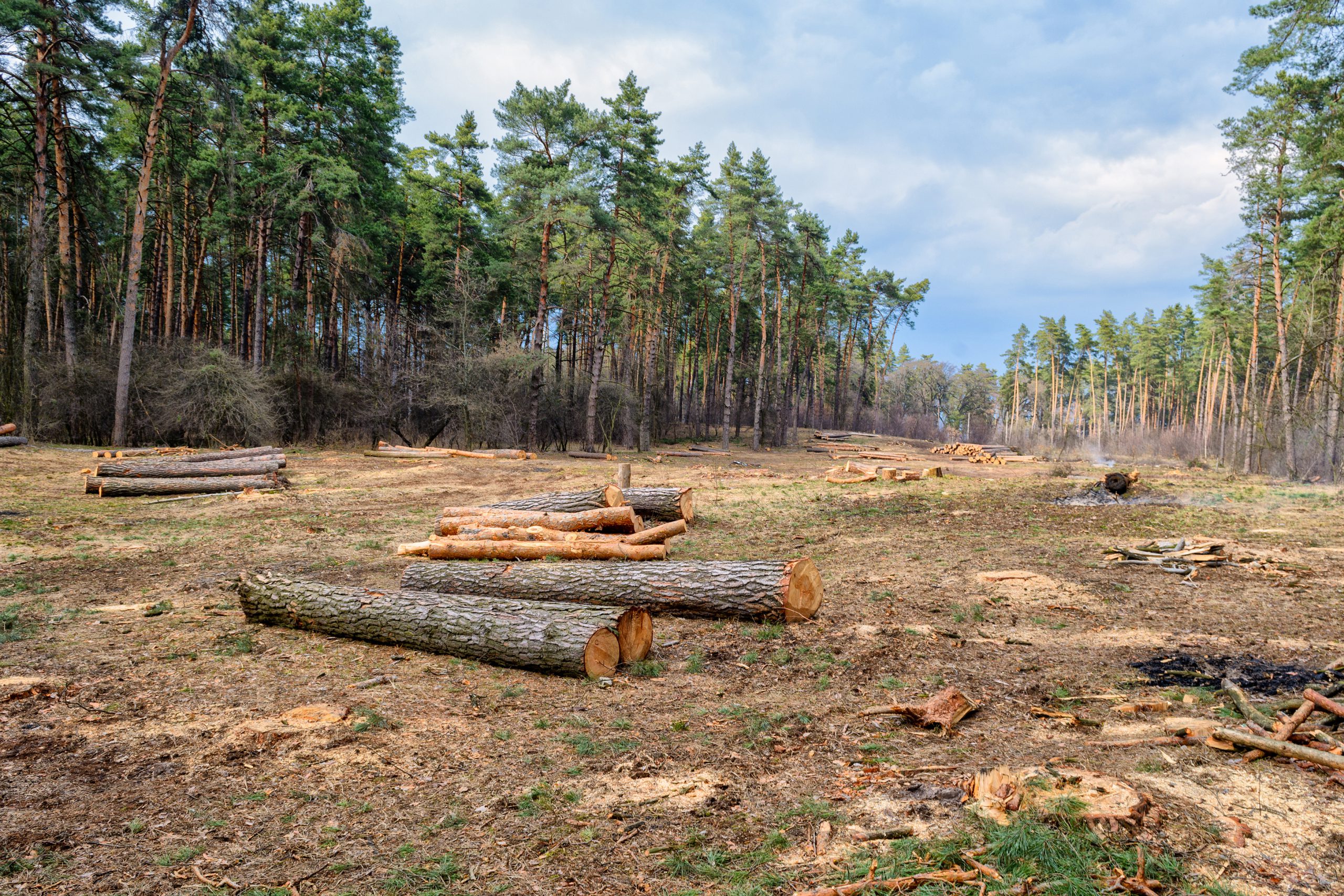
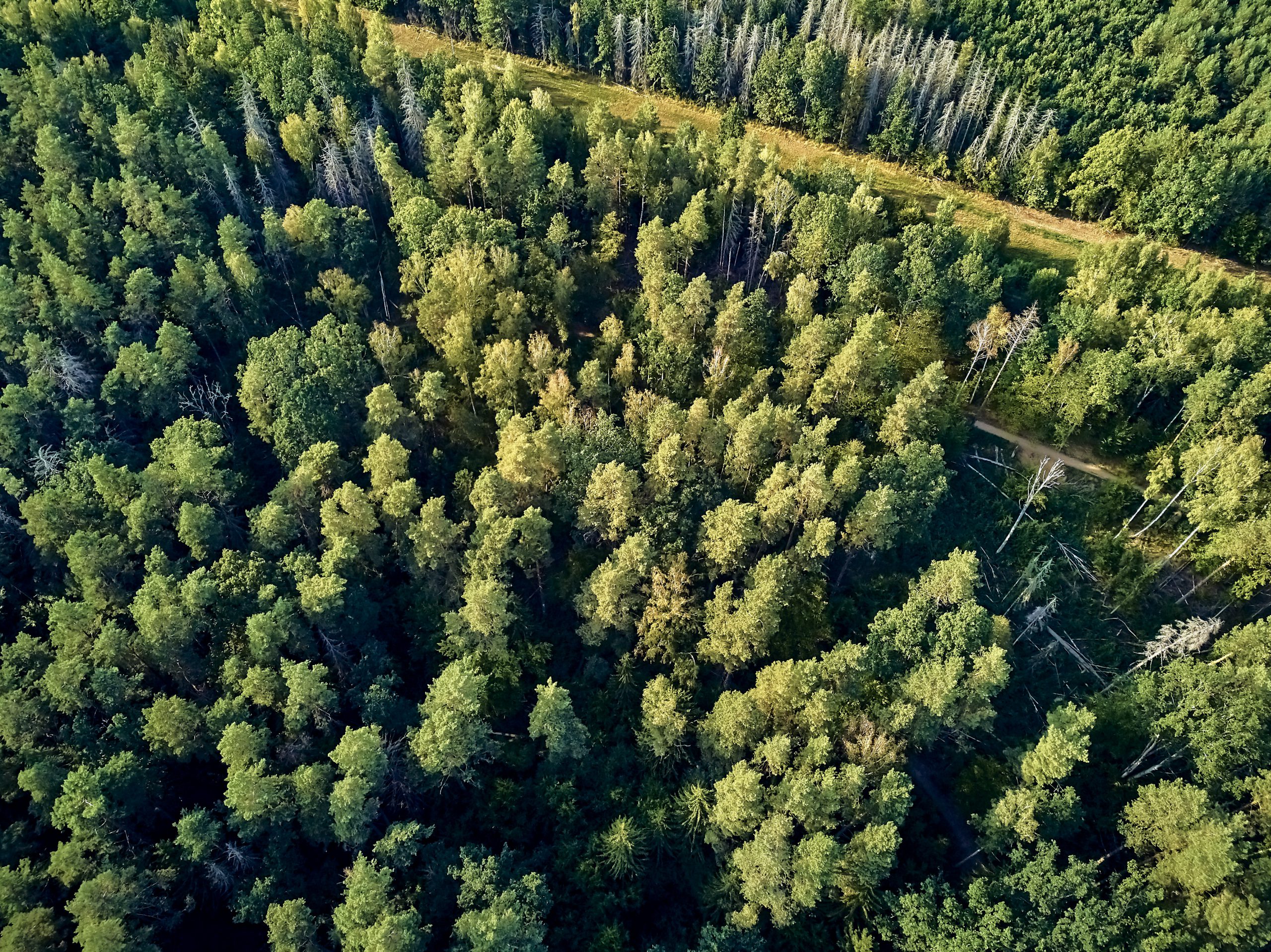
The reforestation policy
During the 19th century, the forests underwent profound transformations that considerably modified their physiognomy. In 1827, the Forestry Code was promulgated to reconstitute and protect the forest heritage. Communal woods were subjected to the forestry regime, i.e. placed under the supervision of the administration of Water and Forests which regulated cutting and prohibited grazing. The rights of use were abolished.
This change in forestry policy was made possible by economic transformations. During the 19th century, needs changed with the rise of the industrial revolution, which saw the slow decline in the use of wood in favor of coal. After 1850, coal gradually replaced wood as a fuel. Slowly, the situation of the forests improved significantly.
A great reforestation movement began under the Second Empire. The Third Republic continued the work begun by the law of 1882 on the “restoration of mountainous terrain”. Between 1871 and 1918, the German administration imposed on Alsace-Lorraine a new silvicultural model based on the Prussian model. The forests were cut down followed by an artificial regeneration by seeding or transplanting as well as a significant enresinement by the massive introduction of spruces.
The current physiognomy of Alsatian forests remains a legacy of this period, and it is only at the end of the 20th century that foresters progressively adopted a more diversified silviculture, thus richer and less vulnerable.
Philippe Jéhin
For more information: Men against the Forest. The forest exploitation in the Val d’Orbey during the 18th century, Strasbourg, La Nuée bleue, 1993.

Discover in images
The forest and wood
Contact us
We are available and at your service





 Open today from 9a.m. to 12p.m. and 2p.m. to 6p.m.
Open today from 9a.m. to 12p.m. and 2p.m. to 6p.m. Go to the Labaroche wood museum
Go to the Labaroche wood museum Tel. +33 (0)3 89 78 94 18
Tel. +33 (0)3 89 78 94 18

